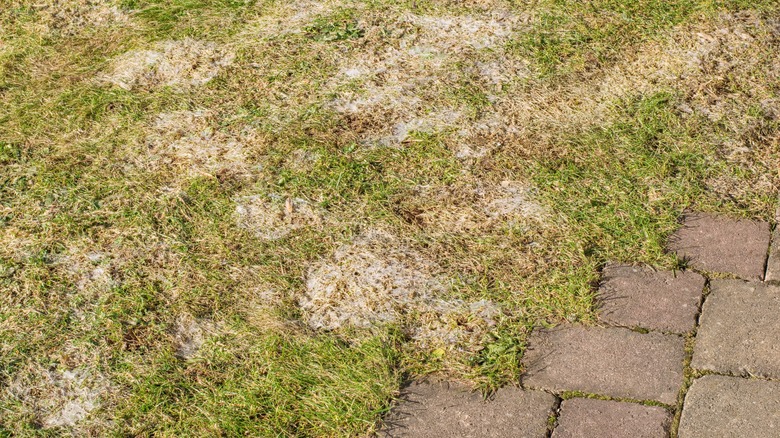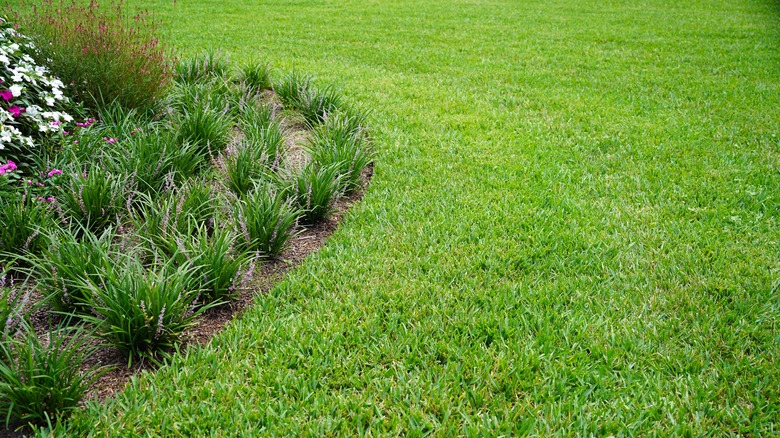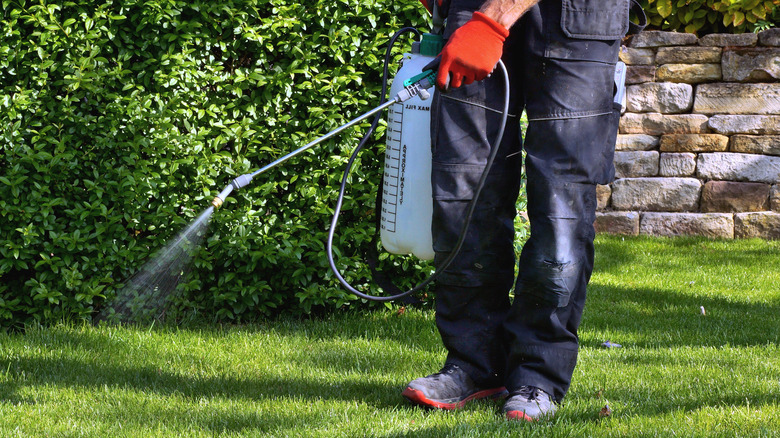How To Prevent Gray Leaf Spot From Taking Over Your Lawn
If you've spotted telltale gray lesions on your lawn, you need to act fast as you might be dealing with a condition known as gray leaf spot. This common fungal disease can wreak havoc on your lawn if left unchecked. Acting swiftly is crucial to prevent this pesky fungus from spreading and causing significant damage to your turf. A combination of cultural practices and the right fungicidal treatments can effectively manage this fungal foe. However, it's not just about applying treatments — you also need to understand how your lawn care practices might be contributing to the problem.
Before you take any action, recognizing the early signs of gray leaf spot is key to controlling its spread. The disease normally starts as small, pinhead-sized spots. These can be gray, brown, or tan in color and may have a dark border. As the disease progresses, the spots grow larger, sometimes taking on an oval shape. In severe cases, the spots can merge, creating larger, irregular patches of dead or dying grass. This not only diminishes your lawn's aesthetic appeal but can also weaken the grass, making it more susceptible to other diseases and environmental stresses. By adjusting how you care for your lawn, you can create an environment less favorable to gray leaf spot and maintain a healthy, vibrant turf.
Understanding susceptible turfgrass types
Gray leaf spot typically makes its first appearance during the warmer, more humid months, when conditions are ideal for fungal growth. This means that in the heat of summer or early fall, you should be on the lookout for the early signs. Also, be aware that certain types of turfgrass are more susceptible to this disease. According to the North Carolina State Extension, St. Augustine grass, perennial ryegrass, and tall fescue grass are particularly prone to gray leaf spot. Newly germinated and established turfgrass are also at the highest risk during periods of rapid growth. If you have these types of grass on your lawn, extra vigilance is needed to catch the disease early.
In addition to recognizing the physical symptoms on your grass, understanding the conditions that favor gray leaf spot is equally important. Over-fertilizing, especially with high-nitrogen fertilizers, can exacerbate the issue as it promotes lush, tender growth, which is more susceptible to infection. Similarly, watering practices play a role. Overwatering can leave the grass wet overnight, creating a perfect environment for fungal diseases to thrive. If your lawn consists of St. Augustine grass, perennial ryegrass, or similar types, and you're in a region with a warm, humid climate, be especially watchful. Regular monitoring and quick action at the first sign of gray leaf spot are crucial for protecting your lawn and maintaining its health and beauty.
Effective control of gray leaf spot: fungicides and preventative measures
To eliminate gray leaf spot, fungicide application is essential. Look for products containing propiconazole, thiophanate-methyl, fluoxastrobin, strobilurin, and azoxystrobin — these have shown good results in managing this disease. However, it's crucial to follow the instructions and apply these treatments correctly and at the right time. Aside from chemical treatments, there are preventative measures you can take to reduce the risk of gray leaf spot. First, consider reducing the frequency of mowing. Overmowing your grass causes stress and makes it more susceptible to diseases. Ensure your mower blades are sharp to prevent tearing the grass, which can open pathways for fungal infections.
Properly dispose of grass clippings, especially if they show signs of infection. Be sure to disinfect all lawn care and gardening equipment. Fungal spores can cling to mowers, trimmers, and other tools, spreading the disease each time you use them. A simple solution of bleach and water can be used to clean your equipment. In addition, proper watering practices can help prevent gray leaf spot. Water your lawn deeply, but less often. Early in the morning is the best time to water, as this allows the grass to dry during the day. Lastly, consider your lawn's nutrition. As mentioned earlier, over-fertilizing, particularly with high-nitrogen fertilizers, can promote lush growth that's more susceptible to gray leaf spot. Balanced fertilization, based on a soil test, can ensure your grass receives the nutrients it needs without encouraging excessive growth.


